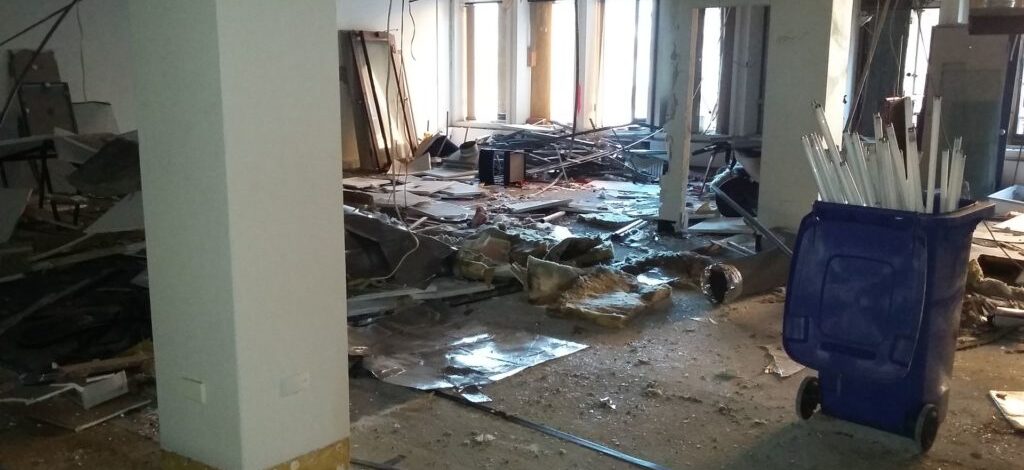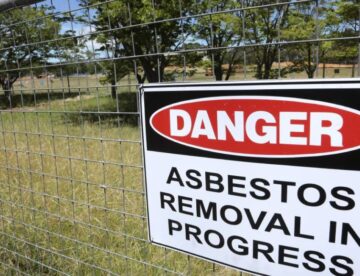Asbestos is dangerous for human health and there are a lot of studies who shows this since 1900s. Unfortunately, many people still don’t know what means pollution with asbestos. This name represents six minerals that occur naturally in the environment as bundles of fibers which separate into thin, durable threads. It has the ability to resist heat, fire and electricity. For this reason, asbestos was mined in huge quantities and very used in many industries.
Later on, in its usage, researchers began to realize its dangers. All unsealed asbestos deteriorates and leads to fiber release. Because its fibres can be very fine, usually below 20 microns in diameter, they are invisible and get into the air. When we inhale or ingest them, can cause serious damage to our body.
Asbestos-containing products have a lifetime of 25 to 50 years. Most buildings and houses in New Zealand built before 1980 are likely to have asbestos products somewhere.
Short history of asbestos
Asbestos is not a modern invention. Its use dates back at least 4,500, but large-scale mining began at the end of the 19th century. Because of its special properties it was considered long time a miracle material and it was increasingly used for a variety of applications around the world: in factories, oil refineries, chemical plants, railways, shipyards. Asbestos materials were used to insulate pipes and boilers in steam locomotives. As society grows, asbestos and asbestos products become important materials for construction industry. It is used in products such as joint compounds, cements, roofing shingles, ceiling and floor tiles, siding, stucco, plaster, and much more. In the brakes and clutches of automobiles also we finds asbestos. Until by the middle of the twentieth century, when it became apparent that asbestos was causing health problems.
The negative health effects of asbestos are noted in 1899. The first documented death related to asbestos was in 1906 and the first diagnosis of asbestosis was made in 1924. Over time, there was increasing concern about the dangers of asbestos and its use has been phased out.
Because of its fiber composition, asbestos is similar to cotton and wool but has the advantage of being heat or fire resistant. This makes it valuable to industry, and science has not yet found a replacement. No other known minerals can be turned into threads or fibers or in clothing. Historical records show that although the health risks of using asbestos were known, companies allowed its use even if it was a dangerous material. Today asbestos is no longer as valuable as in the past. Instead, it has become a highly sensitive subject and an important factor that threatens our health.
Types of asbestos
The term ‘Asbestos’ is describing a naturally occurring fibrous silicate minerals. There are two groups – serpentine and amphibole, and six common types – chrysotile, amosite, crocidolite, tremolite, actinolite, anthophyllite.
Chrysotile or the white asbestos is the most common type. This is the only member of serpentine group for its long, curly fibers that can be woven. It was used in flooring, walls, ceilings, and roof materials.
Amosite is the second most popularly form of asbestos. It has a brown color and was predominantly used in construction including cement sheets, pipe insulation, and ceiling tiles.
Crocidolite is the ‘blue asbestos’, harder and more brittle. Its form of long, straight fiber bundles makes it the most lethal type of asbestos because it can break very easily.
Tremolite is predominantly found in vermiculite (a natural material that blends with a special binder, thereby producing a hard material sold as plates and granules). It has been found as a contaminant in talc powders and chrysotile.
Actinolite is a green or colorless type of asbestos often found in metamorphic rocks. It is not as common as other types but can be found as a contaminant in drywall and other products.
Anthophyllite has a grey-brown colour. It has long, flexible fibers and can be found as a contaminant in some flooring products.
All six asbestos mineral types are human carcinogens. Chrysotile was the most common form of asbestos used in New Zealand, followed by amosite and crocidolite to a lesser extent. Over time, many New Zealand workers were exposed to asbestos in railway workshops, in the building industry, shipping, sawmilling and asbestos cement industries. Asbestos was imported in our country then it was used to make products that comprised of asbestos mixed with cement. These products were manufactured until the mid-1980s. Factories that produced asbestos cement products were opened over the years and hundreds of people have worked there.
In New Zealand asbestos awareness started officially in the 1930s. It became illegal to import blue and brown asbestos into the country in its raw form from 1984. Then, on 1 October 2016, it became illegal to import asbestos-containing products into New Zealand.
It is now important for us to discover asbestos in all its forms and to remove it in conditions of maximum safety. We do not have to regret over the years that we have not tried to do what we need even though we knew the danger.
The most important thing you need to know is that asbestos is dangerous
You don’t have to know all types of asbestos, but you must know that it is very dangerous. Most asbestos-related diseases take around 20 years before their symptoms start to show. Everyone is exposed to asbestos at some time during their life. Low levels of asbestos are present in the air, water, and soil. Breathing high levels of asbestos may result in a slow build up of scar-like tissue in the lungs and in the membrane that surrounds the lungs. Inhaling or ingesting asbestos can lead to serious health issues such as mesothelioma cancer, asbestosis, pleural plaques, pleural effusion, pneumothorax, asbestos warts and asbestos lung cancer.
About 125 million people in the world are exposed to asbestos at the workplace. Approximately half of the deaths from occupational cancer are estimated to be caused by asbestos. In addition, it is estimated that several thousand deaths annually can be attributed to exposure to asbestos in the home. In 2010, around 170 died of asbestos – related diseases in New Zealand.
As the lifetime of asbestos-based materials is extremely high, we will have for many years for now on pollution and risk problems for human health. It is very important that damaged materials containing asbestos are properly removed by a specialized company. Otherwise, their inappropriate destruction or damage may endanger the lives of those who come into contact with asbestos dust, fibers or raw materials.




